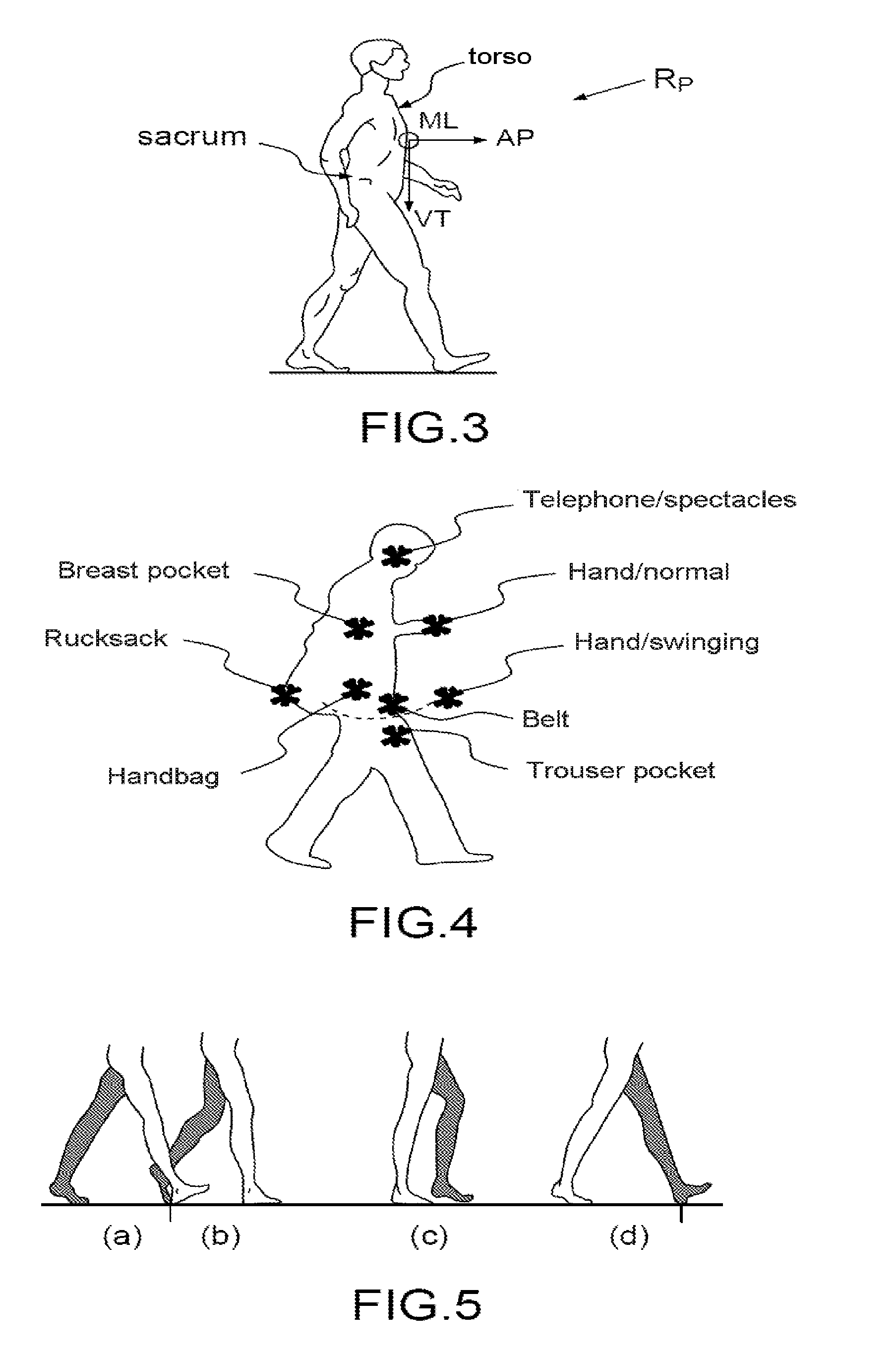Method for determining the orientation of a sensor frame of reference tied to a mobile terminal furnished with a sensor assembly, carried or worn by a user and comprising at least one motion tied motion sensor
a technology of motion sensor and orientation, which is applied in the direction of navigation instruments, speed/acceleration measurement, instruments, etc., can solve the problems of ineffective or defective gnss techniques, rather unadvantageous electrical consumption budget, inaccurate or noisy positions,
- Summary
- Abstract
- Description
- Claims
- Application Information
AI Technical Summary
Benefits of technology
Problems solved by technology
Method used
Image
Examples
Embodiment Construction
[0110]In the set of figures, the elements having the same references are similar.
[0111]FIG. 1 schematically illustrates a pedestrian system and the manner of operation thereof according to an aspect of the invention, and notably the various frames used and their relations.
[0112]A sensor housing BC comprises a sensor assembly EC furnished with at least one motion sensor. A housing frame RB is associated with the sensor housing BC.
[0113]A reference frame RR is also determined. A rotation transformation operator for rotating between the housing frame RB and the reference frame RR is denoted QBR. This operator may evolve over time.
[0114]A pedestrian P is furnished with a pedestrian frame RP. A trajectory frame RT is associated with the trajectory followed by the pedestrian P. An operator QPT between the trajectory frame and the pedestrian frame is defined. This operator is defined by convention of the pedestrian frame RP and trajectory frame RT.
[0115]The pedestrian P and the sensor hous...
PUM
 Login to View More
Login to View More Abstract
Description
Claims
Application Information
 Login to View More
Login to View More - R&D
- Intellectual Property
- Life Sciences
- Materials
- Tech Scout
- Unparalleled Data Quality
- Higher Quality Content
- 60% Fewer Hallucinations
Browse by: Latest US Patents, China's latest patents, Technical Efficacy Thesaurus, Application Domain, Technology Topic, Popular Technical Reports.
© 2025 PatSnap. All rights reserved.Legal|Privacy policy|Modern Slavery Act Transparency Statement|Sitemap|About US| Contact US: help@patsnap.com



